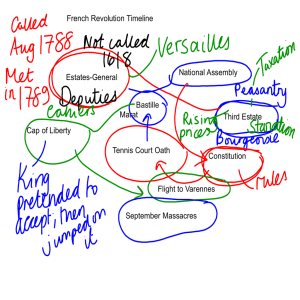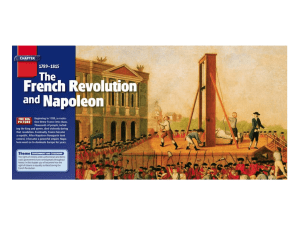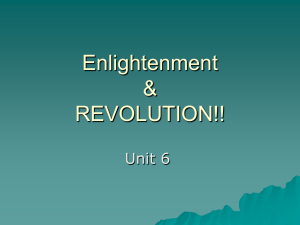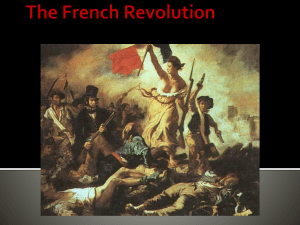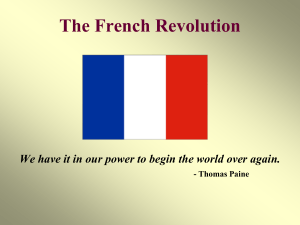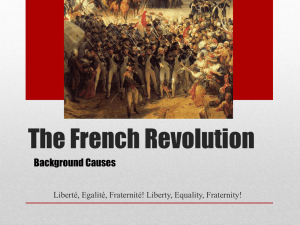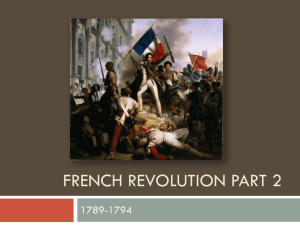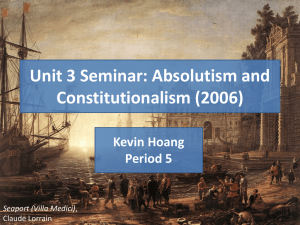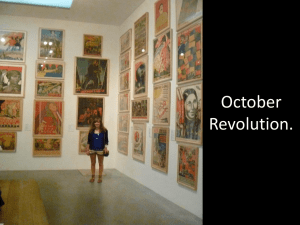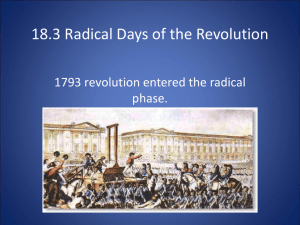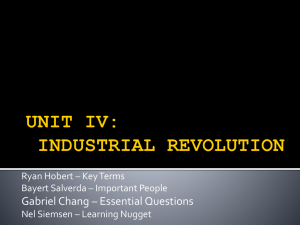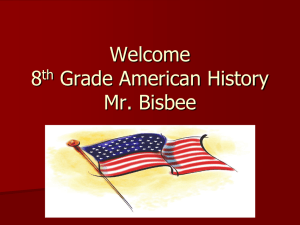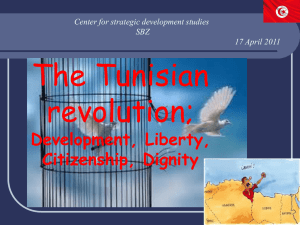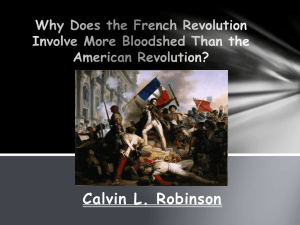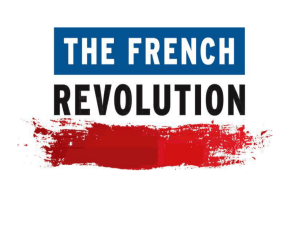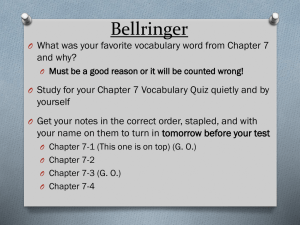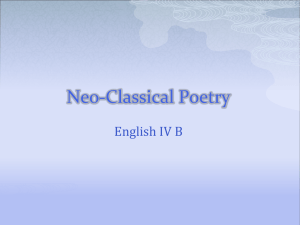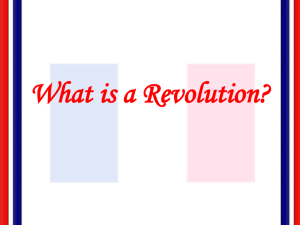French Revolution PPT Notes - University High World History
advertisement
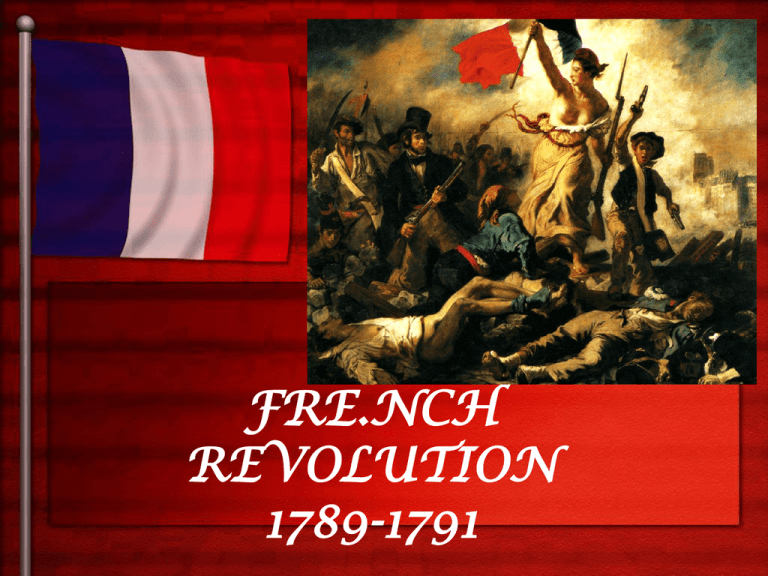
FRE.NCH REVOLUTION 1789-1791 I. “Old Regime” (anciem regime) 1. Medieval “estates” system outdated Louis XIV “Sun King” a) 1st Est.- clergy (r.1638-1715) nd b) 2 Est.- nobility c) 3rd Est.- everyone else: 95% (mostly peasants) 2. Peasants bore most of tax burden – corvee: unpaid labor to repair roads 3. Enlightenment ideas lead people to question inequalities II. Economic turmoil 1. Debt from aid to American Revolution 2. Widespread crop failures1780s (price of bread doubles in 1789) 3. Failure to reform a) Nobles and clergy resisted taxation b) Louis XIV and XV lavish spenders. XVI very indecisive 4. Louis XVI calls meeting of Estates General in 1789 to raise more taxes • • Voted by Estate (not according to each person)! Had not met in 175 years! • What is happening in this image? What does it represent? • Consider the Estates system and the plight of peasants in France. Why and how did the situation get severe? Why wasn’t there a revolution in France like the Civil War in England a century earlier? III. Revolution! Political Change and violence 1. “Tennis Court Oath”- 3rd Est. vow to write a Constitution 2. Peasants attack Bastille. “Great Fear”- peasants attack manor houses and burn feudal contracts 3. Nobles agree to give up special privileges 4. Women march on Versailles to seize royal family 5. “Declaration of Rights of Man” 1789 modeled after Declaration of Independence – Ends “Estate” system, purpose of gov’t is to protect rights What are the most obvious features of this painting? Where is the emphasis and how is it illustrated? What do you think the “light” coming in through the window and shining on the central figure represents? Who do you think the three figures in the front coming together represent? The “fleur de lis” was the symbol of the House of Bourbon. The symbol of the Revolution was the French tri-color. It would become a symbol of the rising French nationalism, especially under Napoleon. IV. Internal Changes and External Fears 1. Constitution of 1791 • • • • 2. 3. Established Legislative Assembly End privilege of Church Gave voting rights only to landowning citizens Proved ineffective, eventually dissolved Austria (Marie Antoinette’s homeland)and Prussia fear revolutions. Go to war w/France Louis XVI and Marie Antoinette executed V. “Reign of Terror” 1. Radical Jacobin lawyer Maximillian Robespierre came to power, executed 40,000 by guillotine to put down rebellions and restore order. Killed: • • • 2. Suspected royalists Political enemies, his own allies Anyone who opposed principals of the Revolution Attempted to create new religion+calendar to erase Christianity from French history Was last victim of guillotine himself Bloody chaos of “Terror” left French people wanting order and stability 3. 4. – Enter Napoleon, the great dictator Questions to consider: • Why did the French Revolution descend into chaos, bloodshed and terror after Revolution, while America experience relative stability? • Why was the backlash against the rich so severe during the Revolution? • Just how “enlightened” were the ideals of the Revolution? • More importantly, how “enlightened” was the reality, actual events and fallout of the Revolution? Can you read French? You don’t really need to be an expert to figure this out: “Liberty, equality, brotherhood” was the motto of the Revolution. However, while “liberty” was stressed in America: allow everyone to live freely apart from the tyranny of a strong gov’t, in France, the emphasis was on “equality”. That is, let’s MAKE everyone equal. Anyone who dressed like a noble had good reason to fear for their lives, because “equality” was forced, in a way. Look at the blue strip on the flag on the left. What does it say? “Terreur” These men are the san culottes (literally without knee-breeches). It was a social statement of solidarity with the Revolution because it was the nobility who had always worn knee-breeches


